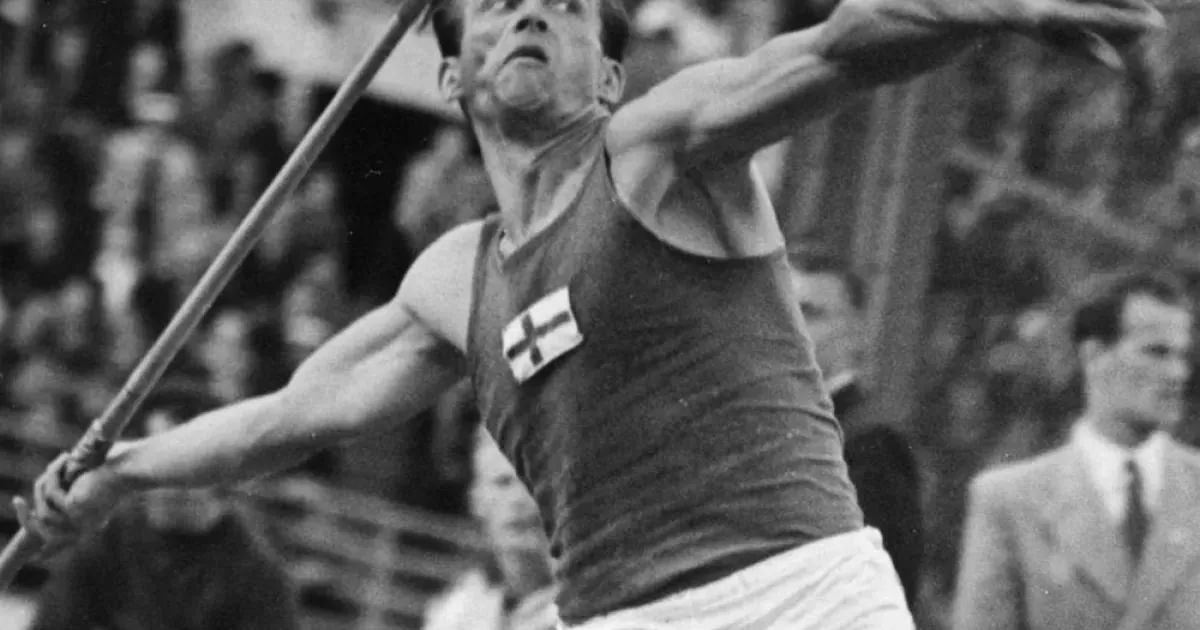The javelin throw is a track and field event held at the Summer Olympics. The men's javelin throw has been an Olympic event since 1908. The women's event was introduced at the 1932 Olympics. It became the second women's throws event after the discus.
1906: Men's freestyle javelin at the 1906 Games
At the 1906 Games, the men's freestyle javelin event was contested, marking the first time the javelin featured on the Olympic programme. Swedish athletes dominated the competition.
1906: Freestyle javelin contest
Following the freestyle javelin contest at the 1906 Intercalated Games, the event was continued at the 1908 London Olympics.
1906: Freestyle javelin at the Intercalated Games
In 1906, a freestyle version of the javelin was first contested at the Intercalated Games.
1906: Intercalated Games in Athens
In 1906, the Intercalated Games were held in Athens and were officially recognized as part of the Olympic Games series at the time. The International Olympic Committee (IOC) later decided not to recognize these games as part of the official Olympic series.
1908: Eric Lemming won the first two Olympic titles proper
Eric Lemming would go on to win the first two Olympic titles proper in 1908 and 1912.
1908: Eric Lemming won at the London Olympics
In 1908 London Olympics, Eric Lemming won his second freestyle title, and his first officially recognised Olympics gold, and also won the standard style event as well. The freestyle event was dropped after 1908.
1908: Men's javelin throw at the Olympics
In 1908, the men's javelin throw was introduced to the Olympic athletics programme, marking it as the last of the current throwing events to be featured at the Olympics.
1908: Freestyle javelin at the London Olympics
The freestyle javelin event was contested again at the 1908 London Olympics.
1912: Two-handed javelin throw competition at the Stockholm Olympics
At the 1912 Stockholm Olympics, a two-handed variant of the standard javelin throw competition took place. Each athlete had three attempts using each hand, and their score was calculated by adding their best performances for the left and right hands.
1912: Eric Lemming won the first two Olympic titles proper
Eric Lemming would go on to win the first two Olympic titles proper in 1908 and 1912.
1912: Finnish athletes completed a podium sweep
In 1912, Finnish athletes completed a podium sweep in the two-handed javelin event. Julius Saaristo took the gold medal. Eric Lemming performed poorly with his left hand and finished in fourth place.
1912: Two-handed javelin at the Stockholm Olympics
In 1912, a one-off two-handed version of the javelin throw was held at the Stockholm Olympics.
1928: Discus throw at the Olympics
In 1928, the discus throw happened in Olympics.
1932: Women's javelin throw at the Olympics
The women's javelin throw was first contested at the Olympics in 1932, becoming the second women's throws event after the discus event in 1928.
Mentioned in this timeline
The modern Olympic Games are a leading international sporting event...
Greece officially the Hellenic Republic is a country in Southeast...
Trending
8 months ago Trump Denies Arkansas Tornado Relief: Sanders Appeals; Victims Blocked from Aid
2 months ago Jason Clarke stars in 'The Last Frontier,' an Alaskan adventure series on Apple TV+.

1 month ago Ubisoft's Anno 117 includes AI art placeholder; Fans react negatively.

28 days ago IAEA Conducts Safety Assessment Mission at Chernobyl Nuclear Power Plant; 50th Rotation Completed.

A countdown is a backward counting sequence indicating the time remaining before a scheduled event NASA utilizes L-minus T-minus and...

8 months ago Kevin Hart to Host the 2025 BET Awards: A Comedic Takeover!
Popular

XXXTentacion born Jahseh Dwayne Ricardo Onfroy was a controversial yet...

Ben Shapiro is a prominent American conservative political commentator media...

Candace Owens is an American conservative political commentator and author...

William Franklin Graham III commonly known as Franklin Graham is...

Tucker Carlson is an American conservative political commentator known for...
The Kennedy Center Honors are annual awards recognizing individuals and...
